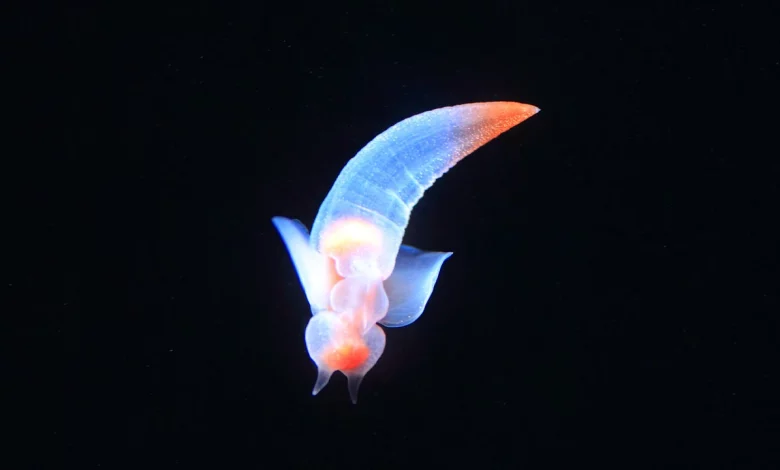
Context- Due to climate change, the Southern Ocean’s population of sea butterflies is decreasing, making them extremely vulnerable.
Key Highlights
About:
- Ocean butterflies, scientific name Thecosomata, are a suborder of ocean snails known as shelled pteropods.
- They can swim in water instead of gliding on solid surfaces because they have strong feet.
- Sea butterflies are holoplankton—organisms that live their entire lives in the water column—and spend their entire life cycle there. Holoplankton organisms live in the water column.
- They are found in all oceans, but in colder waters they are more diverse and abundant.
- Sea butterflies have a coiled or uncoiled shell of varying shapes and sizes, as well as bilateral symmetry.
- Their shells are mostly transparent, very fragile, and ocean acidification can easily dissolve them.
- They have a head with eyes, tentacles, and a mouth with a long proboscis to catch prey, as well as a pair of wing-like lobes called parapodia for propulsion.
- They have a decreased or missing gill and depend on their body surface for gas trade.
Importance:
- They are a significant food hotspot for some fish, seabirds, whales, and other marine creatures.
- Through their shells and feces, they also play a crucial role in transporting carbon from the surface to the deep ocean.
How does Environmental Change Effect the Number of inhabitants in Ocean Butterflies?
- Acidification of the seas:
-
-
- Ocean acidity rises as a result of the ocean taking in more carbon dioxide.
- diminished availability of carbonate ions, which are required for shell formation and upkeep.
- In winter, more CO2 is absorbed by cooler water, making the ocean more acidic. This indicates that the shelled sea butterflies face the greatest threat during the winter months.
- The shells of sea butterflies can disintegrate, weaken, or deform.
- heightened susceptibility to stress, infections, and predators.
- Influences digestion, development, multiplication, and endurance.
-
- Ocean Warming:
-
-
- Ocean temperatures rising as a result of climate change.
- changes in the number and distribution of sea butterflies.
- Look for the best thermal conditions for growth and survival.
- Modifies food accessibility and quality.
- influences mixing and ocean currents that influence sea butterfly transport.
-
- Oxidation of the Ocean:
-
- Oxygen levels drop as the ocean warms and stratifies.
- affects the energy balance and respiration of sea butterflies.
- Modifies vertical relocation designs.
- Compounds impacts of sea fermentation by expanding broke down carbon dioxide fixations.
How will this reduced population affect the marine ecosystems of Antarctica?
- Decreasing the Food Accessibility for Higher Trophic Levels:
-
-
- Fish, seabirds, whales, and other marine animals rely heavily on sea butterflies for their primary source of nourishment.
- Sea butterflies’ population decline can result in starvation, malnutrition, or reduced reproduction in their prey and predators.
-
- Changing the Marine Food Web’s Balance:
-
-
- Sea butterflies are essential in establishing connections between primary producers (phytoplankton), secondary consumers (zooplankton), and higher trophic levels.
- Decrease in ocean butterfly populace can modify the design and capability of the marine food web.
- Biodiversity and efficiency of the Antarctic marine environment might be impacted.
-
- The Ocean’s Capacity to Store Carbon Is Being Reduced:
-
- Through their shells and feces, sea butterflies contribute to the “biological pump” by transporting carbon from the surface to the deep ocean.
- Populace decline diminishes how much carbon sequestered (cycle of catching and putting away climatic carbon dioxide) in the sea.
- This outcomes in expanded carbon dioxide in the climate and further sea fermentation.





.png)



